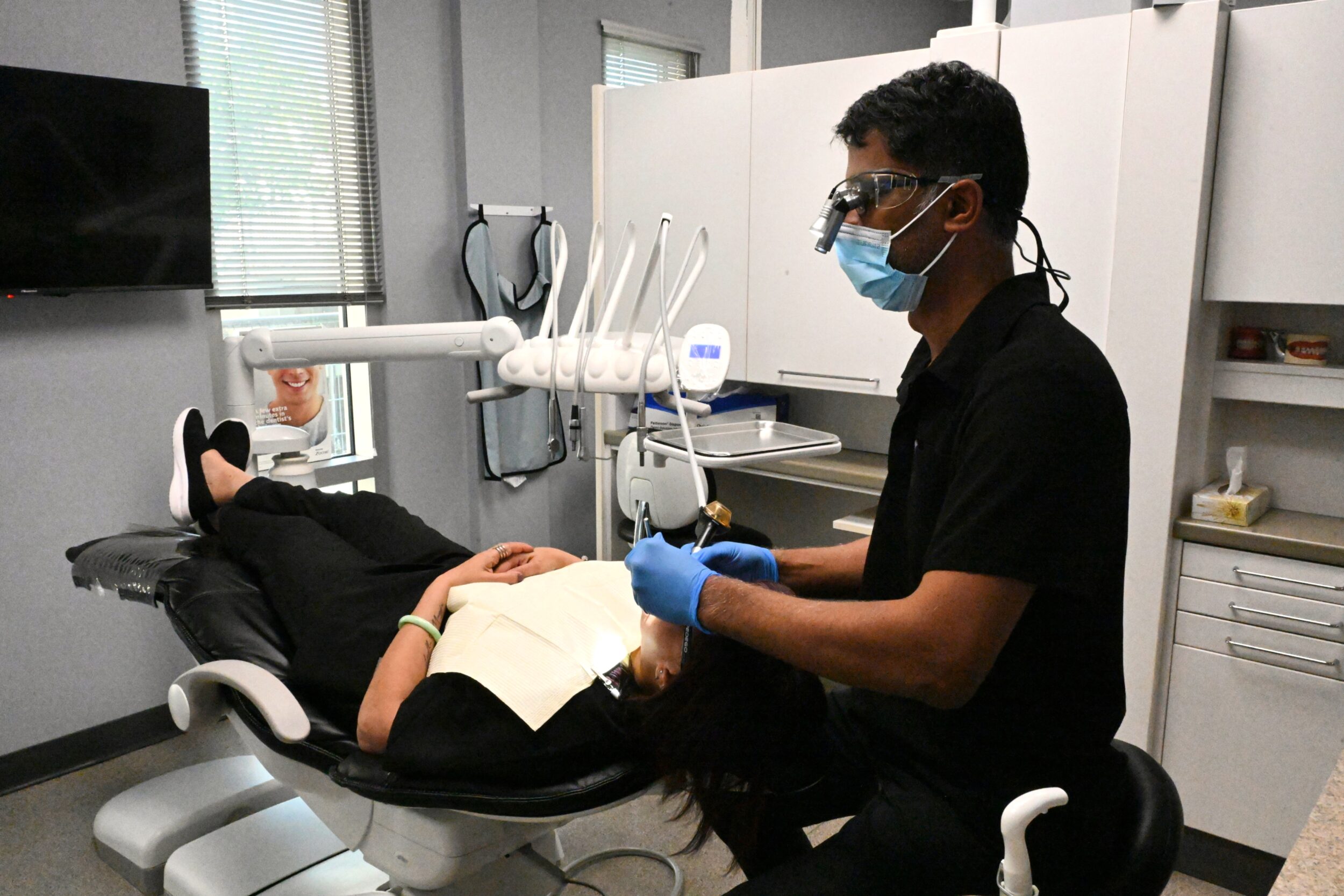When to See a Periodontist in Calgary, AB
Periodontists specialize in the prevention, diagnosis, and treatment of infections and diseases of the soft tissues around the teeth and the jawbone. After four years of dental school, periodontists train an additional three years and master the most advanced techniques for treating periodontal disease and placing dental implants. As well as performing a great many cosmetic procedures, periodontists are also able to enhance one’s smile to its full potential.
Plaque contains toxins that attack the soft tissues surrounding the teeth, resulting in periodontal disease. The bacterium embeds itself in the gum and breeds rapidly, causing a bacterial infection.

As the infection progresses, it burrows deeper into the tissues, causing inflammation and irritation between the teeth and gums. As a result of the body’s response, the gums appear to recede as it destroys the infected tissue. There is a tendency for the pockets between the teeth to deepen over time, and if no treatment is sought, then the tissue that makes up the jawbone is reshaping, resulting in unstable teeth and tooth loss if no treatment is sought.
Referrals from General Dentists and Self Referral
It is possible to seek treatment from a periodontist in a number of ways. In the course of a regular dental examination, a general dentist or hygienist may recommend a consultation with a periodontist if they observe signs of gingivitis or rapidly progressing periodontal disease. If you would like to schedule a periodontal consultation, however, you are not required to get a referral.
It is important that you schedule an appointment with a periodontist as soon as possible if you experience any of these signs and symptoms:
- If you experience bleeding while eating or brushing your teeth
One of the most common signs of periodontal disease is bleeding while eating or cleaning your teeth. - Bad breath
The presence of persistent halitosis (bad breath) despite a rigorous oral hygiene program may point to periodontitis, gingivitis, or the beginning of an infection in the gums. - Loose teeth and gum recession
Periodontal disease can lead to longer teeth due to gum recession and bone loss. If this disease progresses and attacks the jawbone, (the anchor holding the teeth in place), the teeth may become loose or may be lost altogether. - Gangrene in the tissues
General dentists and periodontists can diagnose gangrene by checking the soft tissues, alveolar bone, and periodontal ligament for its presence. - Related health conditions
Diabetes, osteoporosis, osteopenia, and heart disease are highly correlated with periodontitis. It is possible for the bacteria infection to spread through the bloodstream and affect other parts of the body as well.
The diagnosis and treatment of this condition
The periodontist must thoroughly examine the gums, jawbone, and general condition of the teeth before initiating any dental treatment. The periodontist has several surgical and nonsurgical options available when gingivitis or periodontal disease is diagnosed in order to treat the underlying infection, prevent soft tissue recession, and restructure or replace missing teeth.
- Gingivitis/mild periodontal disease
If the gum pockets exceed 4 mm in depth, the periodontist or hygienist may perform scaling and root planing to remove debris and allow the pockets to heal. Afterwards, you will receive education and advice on how to maintain a successful cleaning regime. - Periodontal disease of moderate severity
There may be a need for more extensive scaling and root planning if the gum pockets reach 4-6mm in length. A local anesthetic is usually used to perform this type of cleaning. - Periodontal disease at an advanced stage
The presence of gum pockets that are larger than 6-7mm is usually associated with bone loss and gum recession as well. In the majority of cases, scaling and root planning will be performed as the first nonsurgical treatment. To reduce the depth of the pocket, the periodontist may recommend surgical treatment in addition to nonsurgical treatment. - Loss of teeth
Dental implants can be used in situations where one or more teeth are missing as a result of periodontal disease. An implant can be placed in the bone if it is strong enough to provide a suitable anchor for the prosthetic tooth to be attached to. A periodontist may perform bone grafts if the bone has been eroded severely in order to provide a suitable anchor for the new tooth/teeth.
Consult your periodontist if you have any questions regarding periodontal disease, periodontal treatment, or dental implants.